I started labeling cardboard boxes about five months back. My strain of box-labeling (BL) bears no resemblance to the pragmatic BL one might take part in while moving homes, for instance, or even the type one uses to store old trinkets and heirlooms in their attic. No, that kind of BL is about tidiness, organization, efficiency — cardinal sins for a iconoclastic artist, such as myself. My BL engenders boxes that hold deeper meaning, audaciously blurring the lines between bleeding-edge technology, household décor, and contemporary art. Before I elaborate on the artistic process it takes to create one of my boxes, I’d like to take a moment to recount my sources of inspiration.
There are three men in particular to whom I can confidently attribute my BL work: Jeff Bezos, Casey Neistat, Virgil Abloh.
The Notorious J.P.B.
Ultimately, I would not have access to such an abundance of cardboard if not for the work and livelihood Jeffrey P. Bezos along with hardworking men and women over at Amazon.com, Inc.. Sometimes I’ll use the Amazon boxes that my package is delivered in, and other times I might just let loose, bend the rules just a smidge, and use the box within the box, that is, the box that the product itself is packaged in.
Whenever I leave my apartment through the back exit (the side closer to my University campus), I’m often horrified at the amount of cardboard boxes in our communal recycling bins—boxes that carry the decorational value equivalent to any tapestry, movie poster, or WiFi-compatible LED light strip that young adults pad their apartments with. It takes immense restraint to not take a few of the boxes back up to my apartment—takes an even greater effort to hold back the tears.
I have never recycled a cardboard box. I’m not really into burning money.
Big Creator in the Big Apple
I wouldn’t say that I am a die-hard fan of Casey Neistat. Still, I’ve watched a small, curated selection of his videos, and learned a lot from them by studying his daily routine and habits, his attitudes on life and career, and most notably, his heterodox style as a creative. One example of the latter that always stood out to me was his method of personalizing his Ray-Ban sunglasses.

As is quite clear, these are no typical Ray-Ban’s to which one might see the average conventionalist conform (i.e., buying a pair and wearing them out of the box, protecting them from any scratches or damage). Casey diverges from the status quo from the get-go, vandalizing the luxury glasses directly after the purchase, not even granting them a pre-mortem traditional wear. On a pair of all-black Ray-Ban’s, he’ll start by using an angle grinder to remove the Ray-Ban logo that appears on one of the temples and a pairing knife to remove the logo that appears on the right lens. The cherry on top is a generous coating of white spray paint, which is then scraped of with a popsicle stick to ensure visibility. After all, they still need to be utile, but without any brand association with Ray-Ban®. Here’s his video on how and why he does this—the video that initially caught my attention years back.
How does this relate to my case of BL? Well, Casey has also given various tours of his studio where he builds things, records things, and ultimately, creates things, and so I’ve began to pick up his habit of liberally labeling things.
Some examples from Casey’s studio tour:
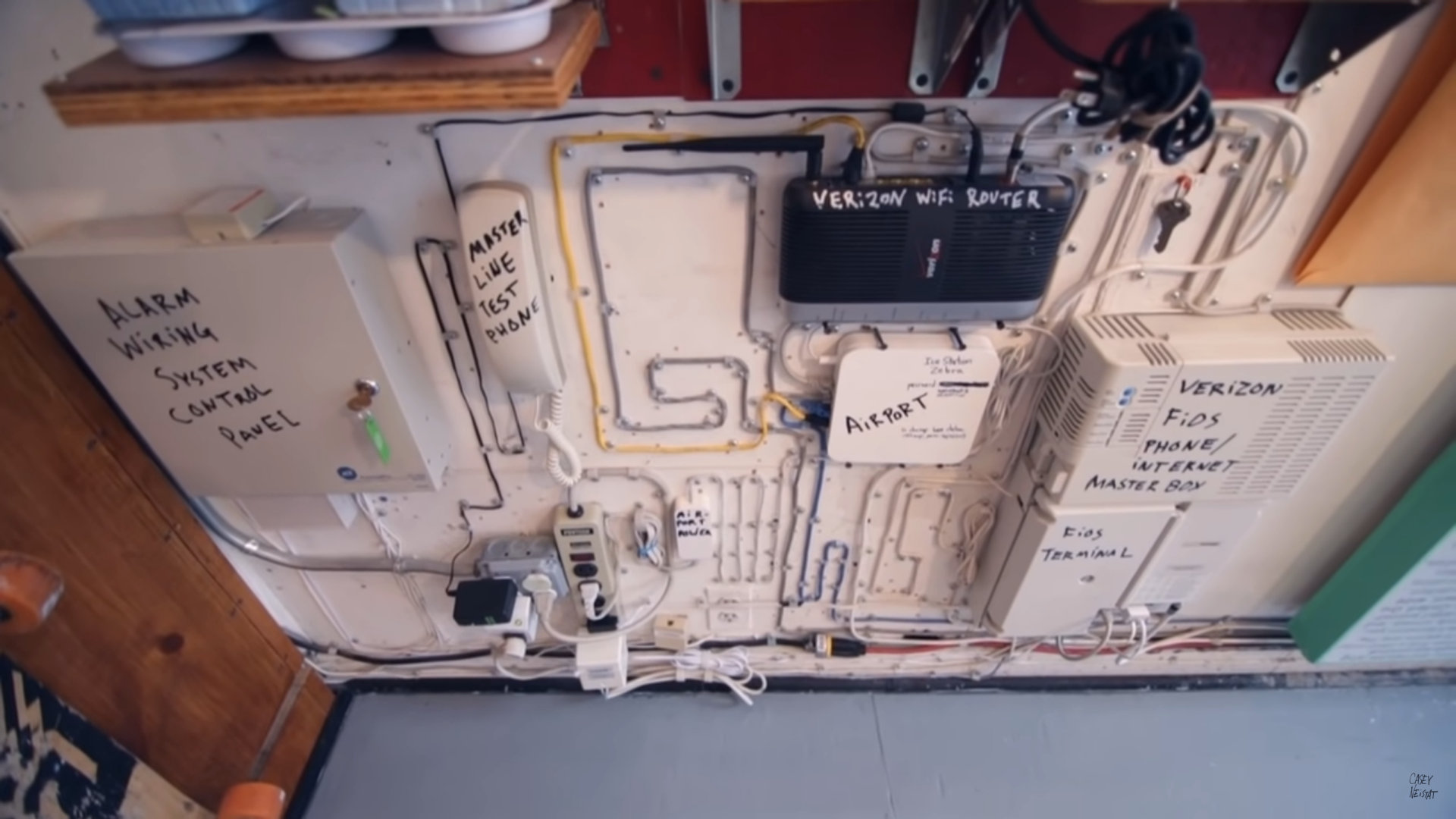
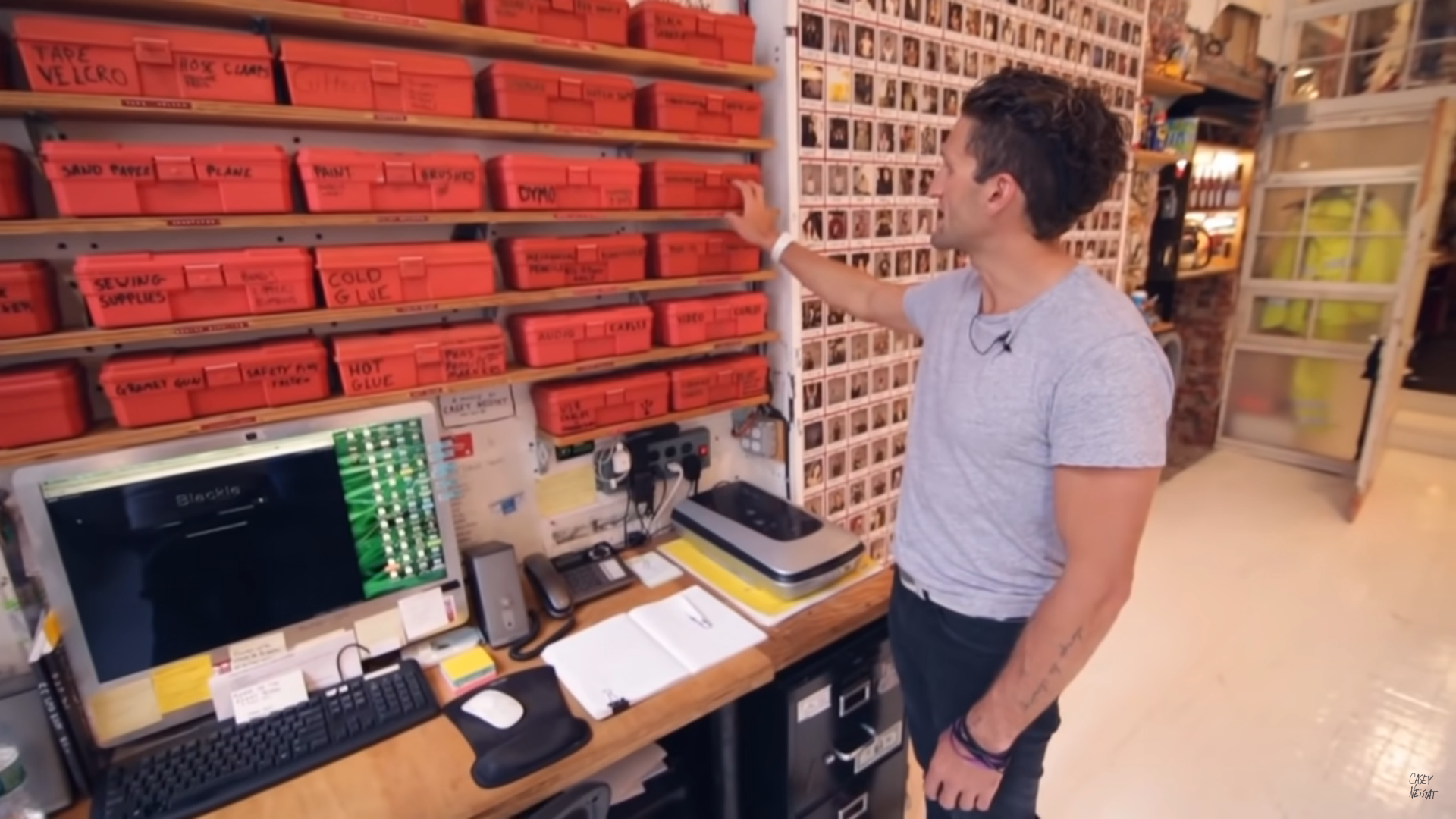
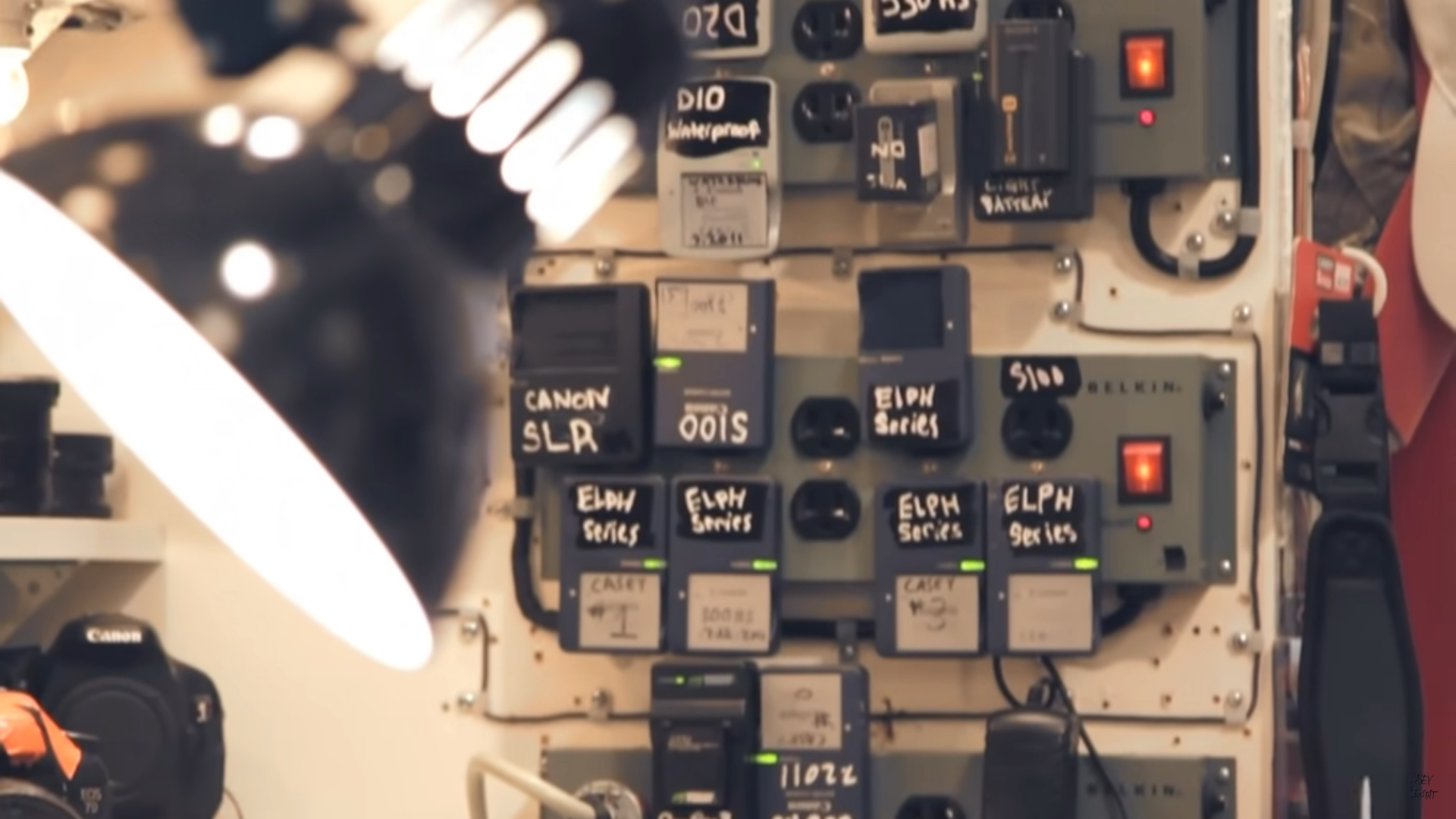
I’ll often find myself feeling doubtful and uncertain with my BL, in regards to the worry of messing up something that is already precious by labeling it, or not having visually-appealing enough handwriting to constitute a label as a medium of decoration. This video reassures me whenever I watch it, as I can admire Casey’s originality and execution of creative quirks that he thinks are useful, with little mind paid to the thoughts and perceptions of others: a paradoxical approach that results in millions admiring what he does, for the very originality into which he puts no effort.
I consequently decided to start labeling my apartment, not just because that’s what Casey does, but also because I liked the look of it. And the crucial part: I knew I could personalize it—make it my own.
Purveyor of the gray area between black and white
Virgil Abloh (ILWIIR), the founder and CEO of Off-White as well as the artistic director of Louis Vuitton’s menswear collection, has had a plainly obvious influence on my BL style, predominantly inspiring the content of the text that is pedantically transcribed onto Casey’s label, that is then adhered to Jeff Bezos’ boxes.
My BL makes use of the renowned Off-White quotation marks, and if you don’t know what I’m referencing, here’s an example of one of the brand’s luxury accessories:
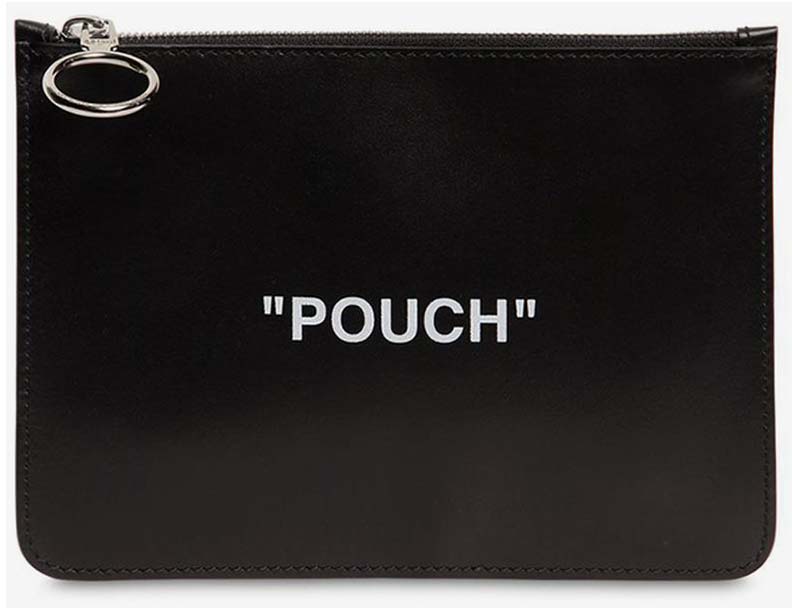
I know what you’re thinking, that solid black coin pouch with no design except the text, “POUCH”, on it should probably not be retailing at $360. However, the very fact that heaps of narrow-minded, fashion-averse consumers share this opinion is precisely what makes this product so valuable.
I have borrowed the quotation mark approach of design, and have applied it to my BL. Parallel to Off-White’s use of descriptive labeling, the words contained within the quotation marks for my BL simply denote what the box does—it’s innate and perpetual purpose, if you will.
Although my works of BL are not currently up for sale, when the day comes that I deem the people of this world categorically ready for my art, I will commercialize with rapacious haste.
My BL Process
My box labeling process is quite simple, and only takes a couple of minutes. If you follow these directions closely, you’ll likely end up with a labeled box that looks quite similar to mine, but of course, not exactly like mine. You might lead yourself to believe that BL is a trivial art form, and that you’ve gotten the hang of it after a few boxes. To that, I can but humbly respond that my labeling is more intricate than images can convey, and that I’ve been fine-tuning my craft for months (5, to recount); you, a nascent student of said craft, have a long way to go before reaching a level of experience to begin comparing your work with mine, and even then, there is a level natural talent that just cannot be taught. Notwithstanding, this is no reason to be discouraged. Just follow the instructions scrupulously, and you surely will end up with a product that is, put lightly, not abysmal. Let us commence.
Step 1: Find a Box
Veteran BLers, like myself (in fact, I may be the only one), source our boxes from Amazon.com, not only for their top-tier quality corrugated cardboard, but also for their prestigious name brand logo step-and-repeated across the tape job.
Step 2: Apply the Label
For my labeling, I exclusively use 3M Highland Masking Tape, with dimensions 0.96’’ by 60 yards and a 3’’ core. Stay away from Scotch™—some will claim that their product is superior, but the brand recognizability allows for viewers of your art to make blasphemous claims including, “Did you just put Scotch™ tape on an Amazon box and write on it?”. Knowing damn well that we did NOT use Scotch™ tape on an Amazon box, we can respond stating so. Voilà, the air of mystery is preserved. The marker selection isn’t as important, a black Sharpie chisel-tip permanent marker will suffice. The contents of the label, shall be explained in the next step.
Step 3: Find a Use Case
It is crucial that the label of the box aligns with it’s use case, something that must be selected with prudence. Boxes are a versatile device, malleable to a handful of use cases: propping up other objects, storing valuable contents within, or, if you are feeling bold, the use case of pure decoration—mere décor. Once you find the use case, write it in all caps, append the word “BOX”, and wrap the whole thing in quotations. This is my own stylistic device inspired by Off-White that you may feel free to borrow. The following examples of my BL work should adequately represent the results of following these steps that I have enumerated.
Some of my Work

I don’t have cable TV, so a 16ft cable in the middle of my apartment’s living room wouldn’t really
match the aesthetic I’m going for. My solution: I stuffed the cable in “CABLE BOX”, that is, a box
that stores cable.

The power block (adapter?) for the LED lights that make up for the lack of overhead lighting in my
apartment doesn’t quite reach the gaming chair (disclaimer: I’m not a gamer) box that I use as a
coffee table. To ensure that the lights aren’t torn down by the weight of the power block, I needed
to prop it up. Enter, “POWER BOX”, a box that transitively provides my home with light—with power.

Condensation often forms on the inside of my bedroom window, the same bedroom where I enjoy a book
here and there. In order to protect them from ruin, I have propped them onto a sacrificial box,
whose duty it is to take up any condensation that leaks onto the window sill.
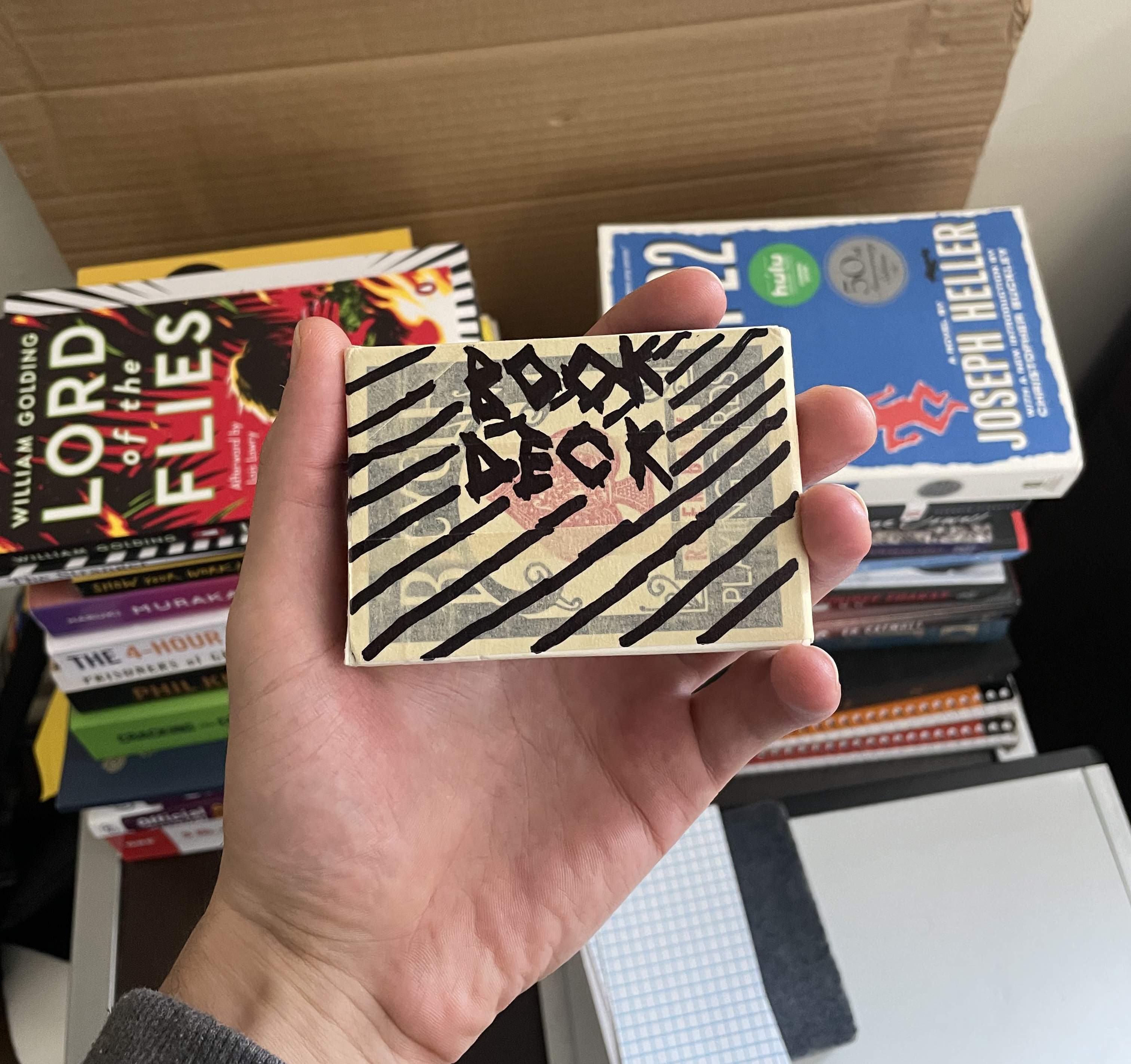
A wildcard (no pun intended) BL instance, here I’ve labeled a non-Amazonian box, namely, a standard
Bicycle deck of cards. This deck constitutes my unique bookmarking system for the various books I
may be reading; in an effort to remain on-topic for this BL post, I may just devote an entire post
to expound upon the functional application of “BOOK-DECK” sometime in the future.

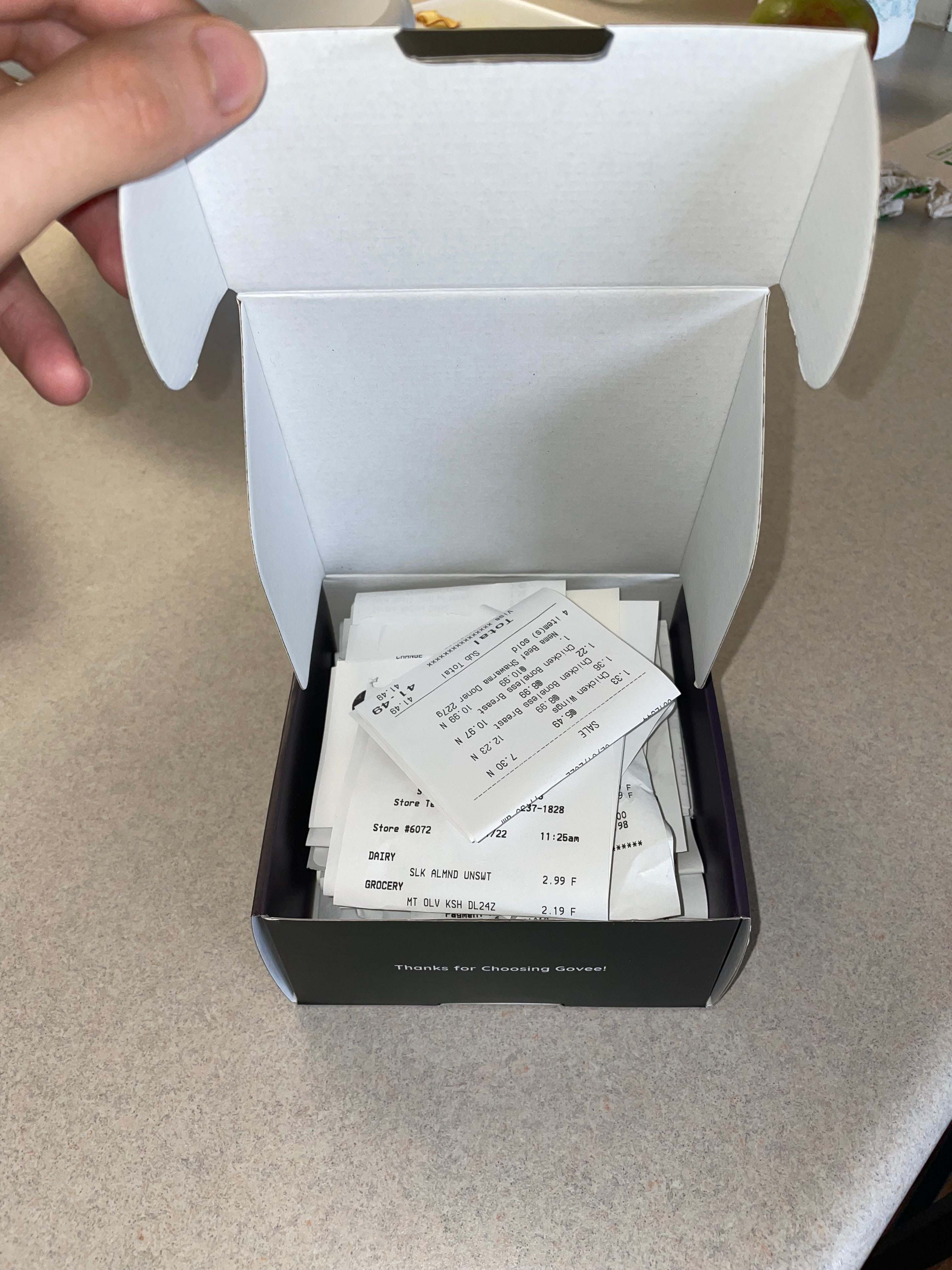
Allowing me to engage my inner hoarder, “RECEIPT BOX” is simply a storage unit for all commercial
purchases that I make, no matter how trivial.
The Future of BL
Like most art forms, the future of BL will be determined, in part, by the community that produces it, yet in majority, by the audience that consumes it. When I invite someone into my home and they ask me with a confounded look, “What is that ‘power box’? What does that even do?”, I know that I’ve done a good thing; I know that I’ve created an impact. I invite anyone who is reading this to join me in pursuing BL, and establishing it as an art form regarded with the likes of painting, filmmaking and sculpture. But until then, I’ll humbly continue perfecting my craft, and perhaps more imperatively, documenting the journey for future generations to look back on.
/s…kinda